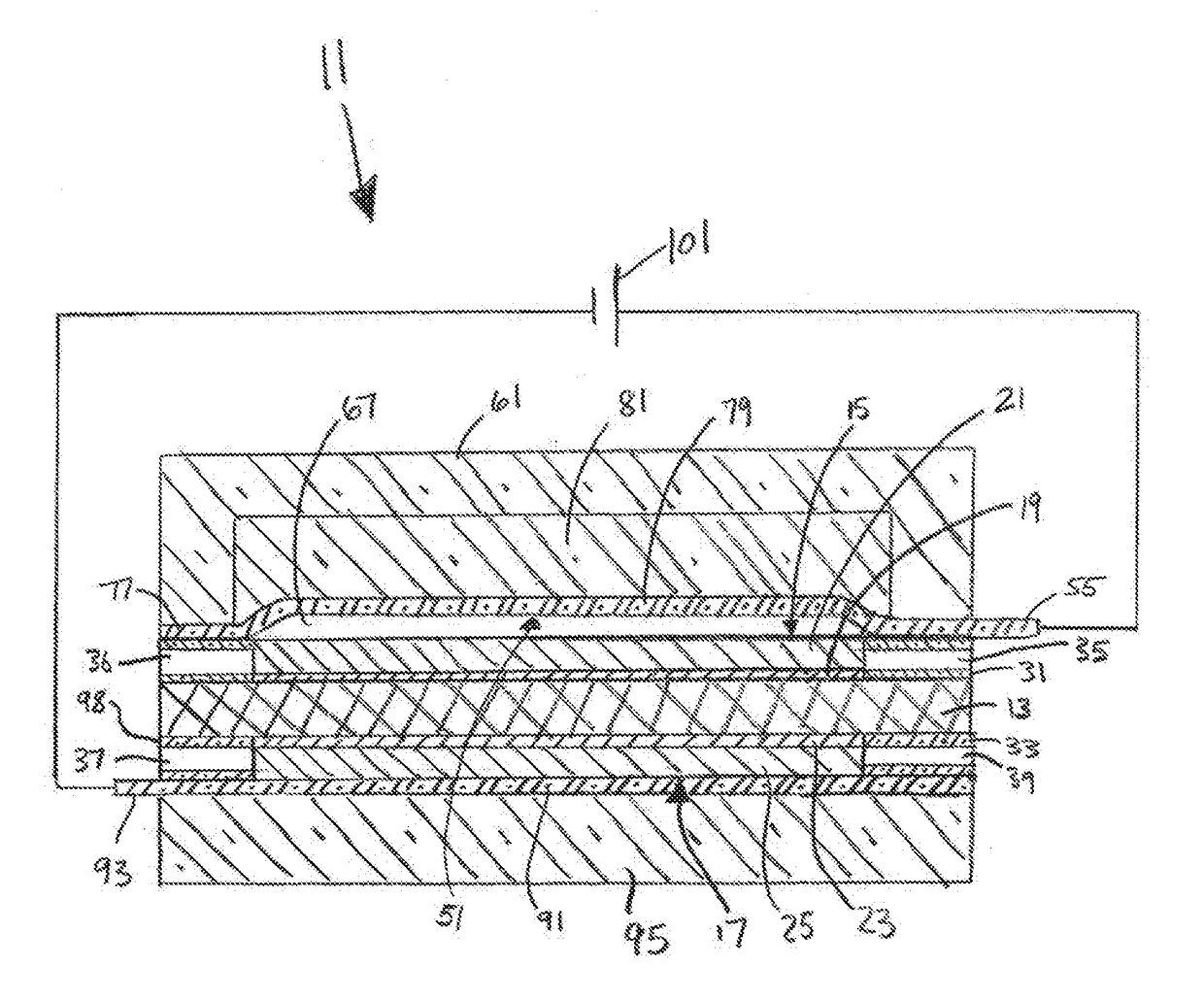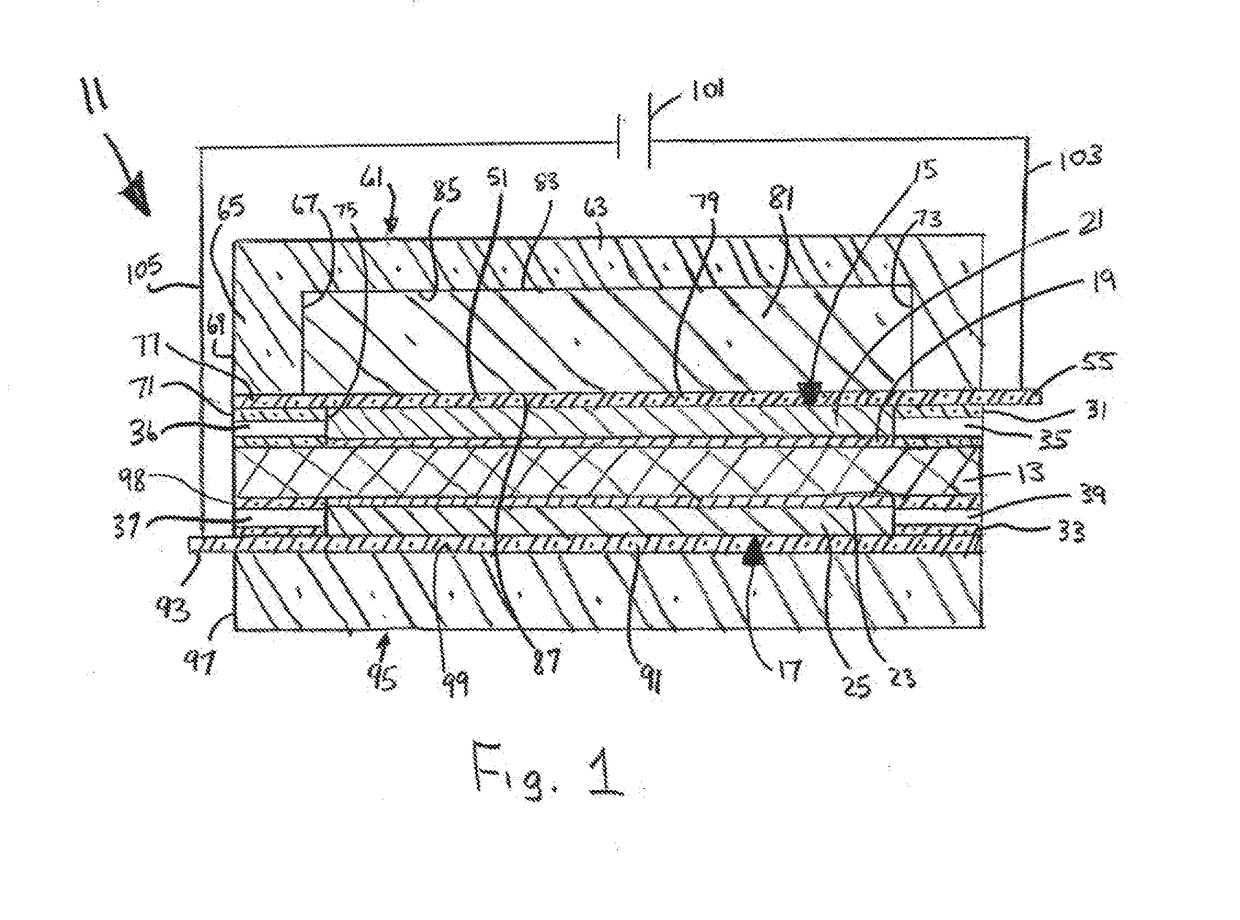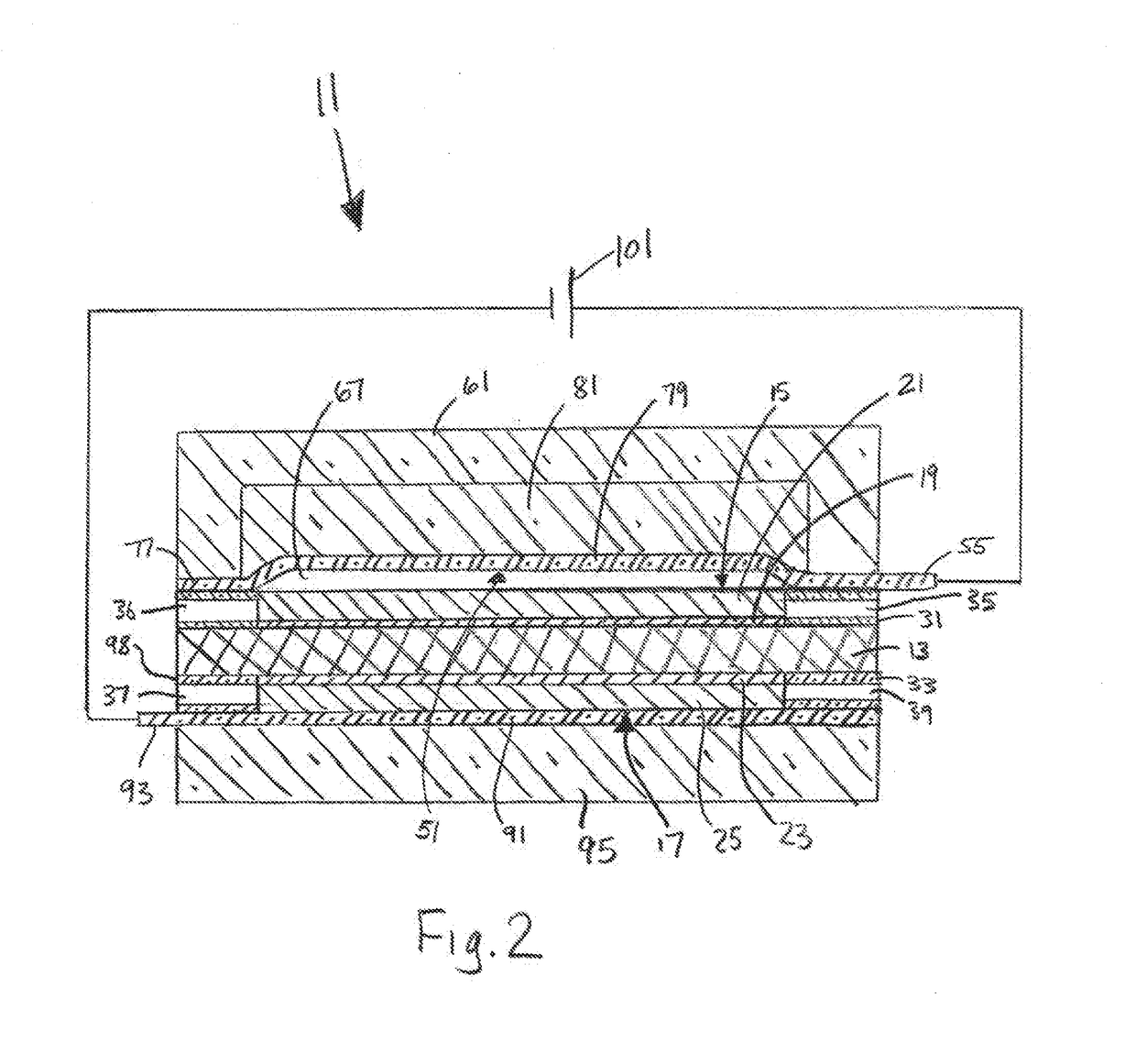Self-regulating electrolytic gas generator and implant system comprising the same
a generator and self-regulating technology, applied in the field of electrolytic gas generators, can solve the problems of increasing the size, cost and complexity of the overall system, increasing the overall system, and increasing the damage to the implant and/or the patient, and achieves the effect of convenient operation and low manufacturing cos
- Summary
- Abstract
- Description
- Claims
- Application Information
AI Technical Summary
Benefits of technology
Problems solved by technology
Method used
Image
Examples
example 1
[0127]A pre-existing, small electrolysis cell was adapted for use as a self-regulating electrolytic gas generator. The cell used machined poly(etheretherketone) plastic endplates and stainless steel fasteners to maintain a constant mechanical load to the active and seal areas of the cell.
[0128]The membrane-electrode assembly (MEA) at the heart of the cell utilized Solvay Aquivion® E79-04SX perfluorosulfonic acid (PFSA) film as the proton-exchange membrane (PEM) and utilized platinum black catalysts (Engelhard, 4 mg / cm2) for the electrocatalysts. The electrocatalysts were blended with Aquivion® PFSA solution (Solvay Specialty Polymers) and applied to the PEM by decal transfer at 1000 psi and 175° C. to unitize the MEA. The anode electrocatalyst contained iridium for improved voltage efficiency.
[0129]The circular active catalyst area (2 cm2) of the MEA was electrically contacted and mechanically reinforced on both sides with porous, conductive media comprising supports. The cathode su...
example 2
[0133]A pre-existing, small electrolysis cell was adapted for use as a self-regulating electrolytic gas generator. The cell used machined poly(etheretherketone) plastic endplates and stainless steel fasteners to maintain a constant mechanical load to the active and seal areas of the cell. Registration pin holes were added to maintain alignment of the gaskets and oxygen port.
[0134]The membrane-electrode assembly (MEA) at the heart of the cell utilized Solvay Aquivion® E79-05S perfluorosulfonic acid (PFSA) film as the proton-exchange membrane (PEM) and utilized platinum black catalysts (Engelhard, 4 mg / cm2) for the electrocatalysts. The electrocatalysts were blended with Aquivion® PFSA solution (Solvay Specialty Polymers) and applied to the PEM by decal transfer at 1000 psi and 175° C. to unitize the MEA. The anode electrocatalyst contained iridium for improved voltage efficiency.
[0135]The circular active catalyst area (1 cm2) of the MEA was electrically contacted and mechanically rei...
PUM
| Property | Measurement | Unit |
|---|---|---|
| length | aaaaa | aaaaa |
| length | aaaaa | aaaaa |
| electrically-conductive | aaaaa | aaaaa |
Abstract
Description
Claims
Application Information
 Login to View More
Login to View More - R&D
- Intellectual Property
- Life Sciences
- Materials
- Tech Scout
- Unparalleled Data Quality
- Higher Quality Content
- 60% Fewer Hallucinations
Browse by: Latest US Patents, China's latest patents, Technical Efficacy Thesaurus, Application Domain, Technology Topic, Popular Technical Reports.
© 2025 PatSnap. All rights reserved.Legal|Privacy policy|Modern Slavery Act Transparency Statement|Sitemap|About US| Contact US: help@patsnap.com



